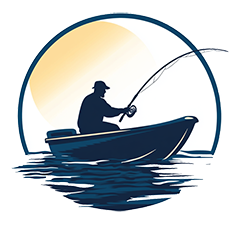In the face of adversity, mastering the art of fishing in survival situations can be a lifeline in survival situations. The ability to procure sustenance from the water demands a blend of skill, patience, and resourcefulness. As one navigates the fine line between hunger and survival, the complexities of fishing methods and gear selection come to the forefront. However, it is not merely about catching fish; it is about understanding the intricate dance between predator and prey that unfolds beneath the surface, a dance that can mean the difference between survival and succumbing to the elements.
Table of Contents
Essential Fishing Techniques
Mastering essential fishing techniques is paramount for survival in various environments, where knowledge and proficiency in methods like hand fishing, spearing, hand lining, gorge hooks, and fish poisoning can mean the difference between sustenance and hunger. In survival fishing situations, passive techniques such as hand fishing prove valuable. Hand fishing, also known as noodling, allows for the direct capture of fish by hand, a skill particularly useful for catching catfish in shallow waters. Fish spearing is another effective method where precision is key. By piercing fish scales and aiming below the fish, successful catches can be made, especially in clear waters. Hand lining, a straightforward hook and line technique, is versatile and suited for various fish species. Gorge hooks, baited with sharp thorns or bone shards, are effective in still waters and small pools. Patience and a steady hand are crucial to ensure the fish swallows the bait, leading to successful catches. In dire situations, fish poisoning from crushed plant materials can be employed to stun or kill fish, providing sustenance when other methods fail.
Improvised Fishing Gear Options
Crafting improvised fishing tools from natural materials like thorns, bones, or branches is crucial for securing sustenance in survival situations. Utilizing available resources such as vines, threads, or sinew to fashion fishing lines enables the setup of makeshift fishing rigs. Employing makeshift fishing lures like insects, shiny objects, or feathers can effectively attract fish when conventional bait is not an option.
Improvised Fishing Tools
When faced with survival situations in the great outdoors, the ability to fashion improvised fishing tools from natural resources can significantly increase your chances of securing food. Crafting improvised fishing gear using branches, vines, and stones is essential for survival. Common tools include handmade hooks, lines, rods, lures, and nets. This resourcefulness is crucial for catching fish to sustain yourself in emergencies. Understanding basic fishing principles and having the skills to create and effectively use improvised fishing tools can make a difference in challenging scenarios. In such situations, the knowledge of how to construct these tools from natural materials becomes a valuable asset, enhancing your ability to procure food when traditional means are unavailable.
Natural Bait Sources
In the realm of survival fishing, the utilization of natural bait sources stands out as a critical component of improvised fishing gear options. Natural bait sources such as worms, insects, grubs, and larvae found in the environment can be incredibly effective in attracting fish in survival scenarios. Additionally, using homemade bait made from berries, seeds, or small fish can entice a variety of fish species to bite. Live bait like crayfish, minnows, or aquatic insects can significantly increase fishing success rates when facing challenging situations. Understanding the preferences of local fish species is key to selecting the most suitable natural bait sources for a successful catch. By being resourceful and creative with improvised gear and homemade bait, individuals can enhance their chances of securing a meal in the wild.
Techniques for Catch
Utilizing natural materials like thorns, bones, or shells, one can fashion improvised fishing hooks essential for securing a catch in survival situations. For a makeshift fishing line, consider using vines, sinew, or even strands of clothing found in the surroundings. To attract fish, create lures from shiny objects, feathers, or insects. Craft fishing rods by attaching a hook and line to branches or sturdy sticks for a reliable method of catching fish. In survival scenarios, constructing fishing nets from cordage, fabric, or clothing can effectively trap fish in water bodies. These techniques offer essential means to procure food when faced with the challenge of survival in the wilderness.
Choosing the Right Fishing Bait
When it comes to survival fishing, selecting the right bait can significantly impact your chances of success. Understanding the effectiveness of different bait types, whether natural or artificial, is crucial for attracting a variety of fish species. Additionally, considering seasonal variations in bait preferences can further enhance your fishing strategy.
Effective Bait Types
Various types of bait can be utilized effectively for fishing, each tailored to attract specific fish species based on their predatory behaviors. In survival fishing situations, live bait such as worms, insects, and small fish are ideal for luring predatory fish. Soft plastic worms are versatile and mimic natural prey, making them a popular choice for various fish species. Artificial lures, available in various shapes and colors, effectively imitate baitfish to attract fish. Cut bait, like fish or shrimp pieces, entices bottom-feeding fish like catfish and carp. Natural bait options such as corn, bread, or cheese work well for catching panfish and trout in freshwater environments. Choose your bait wisely based on the type of fish you aim to catch to increase your chances of success.
Natural Versus Artificial
For anglers seeking to maximize their chances of success on the water, the choice between natural and artificial bait plays a crucial role in determining their fishing outcome. Natural bait, such as worms, insects, and small fish, can attract a wide range of fish species, offering sustainable options for survival fishing. On the other hand, artificial bait like soft plastic worms, spinners, and crankbaits can effectively mimic natural prey to entice fish to strike. Artificial baits come in various colors, sizes, and styles to cater to different fish preferences and water conditions. Selecting the right bait, whether natural or artificial, depends on the target fish species, water clarity, and the fishing technique being employed. Make informed decisions based on the specific conditions to increase your chances of a successful catch.
Seasonal Bait Selection
Anglers seeking to optimize their fishing success must carefully consider seasonal variations when selecting the most suitable bait for their target fish species. Understanding the local fish species and their feeding habits is crucial in determining the most effective bait for each season. Seasonal changes impact the availability and effectiveness of certain baits, making it essential to adapt bait selection accordingly. Natural baits such as worms, insects, and small fish are often preferred by fish and can increase the chances of a successful catch. By aligning bait choices with the time of year, anglers can significantly improve their fishing success rates, especially in survival situations where every catch matters. Adapting to the seasonal bait effectiveness can make a substantial difference in the outcome of fishing endeavors.
Best Times for Fishing
During the early hours of dawn and the peaceful moments of dusk, the optimal times for fishing in survival situations emerge as fish become most active and receptive to bait. Fish tend to feed more actively during these times due to the low light conditions, making it easier for anglers to attract them. The lighting conditions at dawn and dusk provide a favorable environment for both the angler and the fish, increasing the likelihood of a successful catch. Additionally, the cooler temperatures during these times stimulate fish activity, making them more likely to bite.
To maximize fishing success in survival scenarios, understanding fish behavior and their feeding patterns is crucial. By knowing when fish are most active and responsive to bait, anglers can significantly increase their chances of catching fish during dawn and dusk. Being aware of the best times for fishing allows individuals in survival situations to make the most out of their fishing efforts and secure a valuable food source.
Fish Handling and Preparation
Ensuring proper handling and preparation of fish is essential for maintaining their quality and maximizing their nutritional benefits in survival situations. Proper fish handling involves treating the catch humanely and preserving it for future consumption. Fish can be preserved through various methods such as freezing, canning, smoking, salting, or pickling. It is crucial to cook fish to a safe internal temperature to prevent foodborne illnesses. Different cooking methods like direct heat, broiling, spit cooking, and ash cooking can be utilized to prepare fish in survival situations. By learning fish handling and preservation techniques, individuals can ensure they make the most out of their catch, not only in terms of taste but also in maximizing the nutritional benefits that fish provide. In survival scenarios, these skills are invaluable for sustaining oneself with a fresh and safe food source.
Cooking Fish in Survival Situations
Properly cooking fish in survival situations is not only essential for ensuring food safety but also for maximizing the nutritional benefits derived from this valuable food source. When cooking fish, it is crucial to reach a safe internal temperature to prevent foodborne illnesses. Various methods can be employed in survival scenarios, such as direct heat cooking, broiling over an open flame, spit cooking on a skewer, and ash cooking in a makeshift oven. To extend the shelf life of caught fish, preservation techniques like smoking, salting, pickling, or canning can be utilized for future consumption. Understanding different cooking methods not only adds variety in flavors and textures but also enhances the survival diet with essential proteins and nutrients. Proper handling and cooking of fish are paramount in maintaining energy levels and preventing food poisoning during critical situations. By mastering the art of cooking fish in survival settings, individuals can make the most of this abundant food source to sustain themselves in challenging environments.

